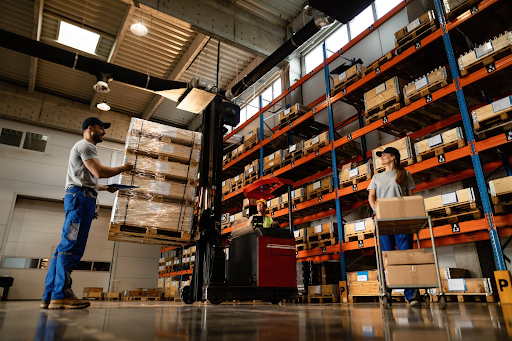
In the dynamic and fast-paced world of warehousing, ensuring the safety of your employees and assets is of paramount importance. As a warehouse manager or business owner, it is your responsibility to create a work environment that prioritizes the well-being of your team and the integrity of your inventory. In this comprehensive guest post, we will explore the essential elements of warehouse safety, guiding you through the strategies and best practices that can help you safeguard your operations.
Warehouse Layout and Design
The foundation of warehouse safety begins with the physical layout and design of your facility. A well-organized and optimized warehouse can significantly reduce the risk of accidents and incidents. Start by ensuring that all aisles and walkways are wide enough to accommodate the flow of traffic, both pedestrian and equipment-based.
Clearly mark designated pathways and designate specific areas for the storage and movement of materials. This not only enhances the efficiency of your operations but also minimizes the potential for collisions and falls.
Lighting and Visibility
Adequate lighting is a crucial aspect of warehouse safety. Ensure that all areas of your warehouse, including the storage racks, loading docks, and walkways, are well-lit to improve visibility and reduce the risk of accidents. Consider installing motion-activated lights or utilizing energy-efficient LED bulbs to maintain optimal illumination while minimizing energy consumption.
Additionally, pay attention to the visibility of your warehouse signage and safety markers. Clearly display important information, such as emergency exits, fire extinguisher locations, and hazardous material storage areas, to ensure that your employees can quickly identify and respond to potential hazards.
Equipment and Machinery Safety
Warehouses often rely on a variety of equipment and machinery, such as forklifts, pallet jacks, and conveyors, to facilitate the handling and movement of goods. Ensure that all equipment is properly maintained, inspected, and operated by trained personnel. Implement a comprehensive preventive maintenance program to identify and address any potential issues before they lead to equipment failure or accidents.
Furthermore, provide comprehensive training to your employees on the safe operation of warehouse equipment. Regularly review and update your training protocols to ensure that your team is equipped with the knowledge and skills necessary to navigate the warehouse environment safely.
Hazard Identification and Risk Management
Identifying and addressing potential hazards is a crucial aspect of warehouse safety. Conduct regular safety audits and risk assessments to identify areas of concern, such as trip and fall hazards, fire risks, or exposure to hazardous materials.
Develop and implement appropriate control measures to mitigate these risks, such as implementing floor markings, providing personal protective equipment (PPE), and ensuring proper storage and handling of hazardous substances.
Encourage your employees to report any safety concerns or near-miss incidents. By fostering a culture of open communication and proactive problem-solving, you can address issues before they escalate and prevent larger-scale incidents from occurring.
Emergency Preparedness
No warehouse safety plan is complete without comprehensive emergency preparedness. Develop and regularly review your emergency response procedures, ensuring that your team is well-versed in the appropriate actions to take in the event of a fire, natural disaster, or other emergency situations.
Maintain easily accessible emergency equipment, such as fire extinguishers, first aid kits, and emergency exits, and ensure that your employees are trained in their proper use. Regularly conduct emergency drills to test the effectiveness of your procedures and identify areas for improvement.







